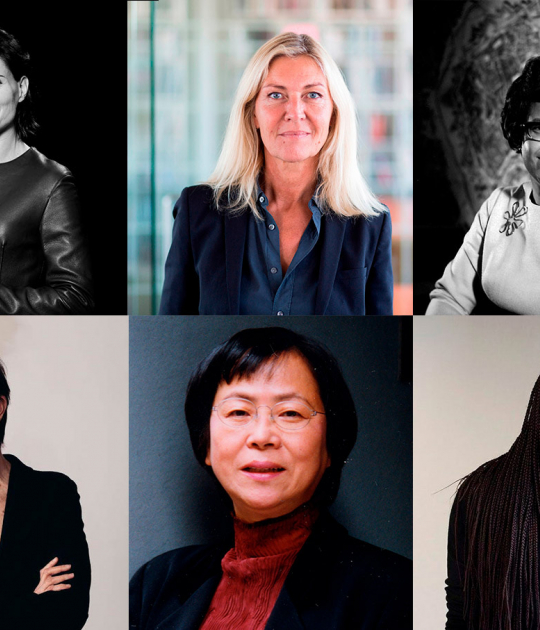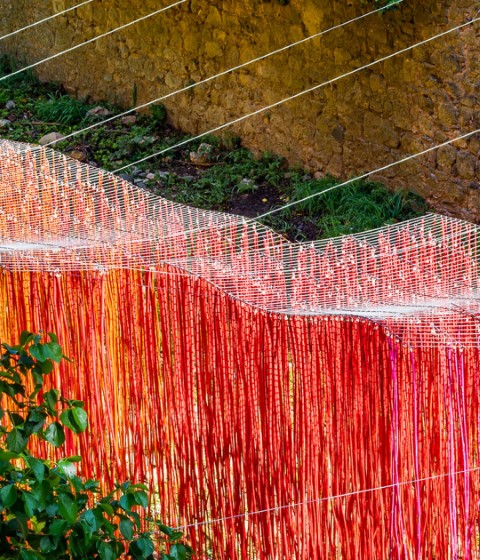1. Wolf House

The house has 3 floors that correspond to an orthogonal design, it has several connection spaces with the outside such as terraces, as well as a small orchard located on the second-floor terrace. The main material used is brick.
2. Tugendhat House

The house has three floors, on the first floor are the most private rooms, a floor below, the social areas, and on the lower floor we find the machines and services. The structure is made of steel and has large windows with magnificent views since the house is located at the top of a hillside.
3. Mies van der Rohe Pavilion

The contrast between the different materials such as glass, steel, and the different types of marble, make this pavilion a unique element. The Barcelona chair was specifically designed by Mies van der Rohe and Lilly Reich for the Barcelona Pavilion.

The kiosk was built at the Sieben Säulen junction in Dessau, projected by Edgar Ludwig from the ideas of Mies van der Rohe in 1932, at the time it functioned as refreshment stands for students.
It is a small rectangular-shaped stall with a small warehouse located near the House of the Masters. Although it survived the war, it was demolished in 1970 by the GDR, however, in 2016 it was restored and reopened.
5. Farnsworth House

14520 River Rd Gate 1, Plano, IL 60545, United States
Built between 1946 and 1951, a few meters from the banks of the Fox River, this house is one of the great icons of Modern Movement architecture, it was commissioned by Edith Farnsworth, who asked Mies van der Rohe for a weekend house.
The structure of the Farnsworth House is made of steel, it has large windows that allow you to enjoy the magnificent views that the landscape offers. However, the fact that its location is so close to the river has brought it various flood problems in recent years, even though it is slightly elevated from the ground.
6. 860-880 Lake Shore Drive Apartments

880 N Lake Shore Dr, Chicago, IL 60611, United States
Apartments 860-880 on Lake Shore Drive were built between 1949 and 1951 by Mies van der Rohe, it is a 26-story tall glass and steel towers, the towers are linked on the ground floor by a covered hallway. These blocks of flats are considered one of the most iconic residential projects of the 20th century.
Over the years, the apartments have suffered a great deterioration due to the wear and tear of the materials that compose them, so in 2009 Chicago Krueck + Sexton restored them.
7. Chapel at IIT Chicago

Chicago, IL 60616, United States
The project was born to create a new chapel at the Illinois Institute of Technology (IIT), since 1942 Mies van der Rohe was already in charge of designing the campus, he was also commissioned to design the chapel.
The chapel stands out both for being the only construction of a religious character by the architect, and for being the only building built in masonry outside of Europe. Since a chapel was requested for the use of all the students regardless of their religious beliefs, the cross and the altar are presented discreetly. Between 2008 and 2013 it was renovated by Harboe Architects.
8. S.R. Crown Hall

3360 S State St, Chicago, IL 60616, United States
Crown Hall was projected in 1956 by Mies van der Rohe, for the IIT College of Architecture, this project besides being one of the most important works of the architect's career is also one of the most remarkable works of the 20th century.
The building has a large open space that mixes a steel structure combined with glass, which makes the interior quite bright. In 2013 it was restored by Krueck & Sexton Architects, which divided the restoration into two phases, the first one consisted of restoring the landscape and the facade, and the second one consisted of making the building more efficient through a series of improvements.

The building located on Park Avenue, projected between 1954 and 1958, was baptized by the critic Herber Muschamp as the most important building of the millennium. The 38-office skyscraper was the fruit of a partnership between Mies van der Rohe and Philip Johnson.
The tower is the closest representation to the current skyscraper model, it has a steel structure, surrounded by a curtain wall, also, Mies made the design of the square near the building, a space to disconnect from the bustle of the city, even though it is located on the noisy streets of New York.
10. Neue Nationalgalerie

Built between 1965 and 1968, and located in Berlin, the Neue Nationalgalerie is the last work of the architect Mies van der Rohe, this project arises at the request of the FRG, which decides to revitalize this area of the city from a series of facilities.
The structure is made of steel and glass, in the purest Mies style, it is very similar to the S.R Crown Hall, an open plan with large windows that create a sense of transparency in the building.

1K3, 201 Rue Berlioz, Montreal, Quebec, Canada
Located on Nun's Island to the southwest of Montreal, the gas station was projected in 1966 by Mies van der Rohe as a prototypical service station, it has two volumes, one for car service and the other for sale.
The structure of beams and columns are made of black painted steel. Over the years, the interior has been modified to add a laundry space, it ceased to function as a gas station in 2008, and in 2009 it became a heritage building. In 2011 it was remodeled by the studio Les architectes FABG.

The Chicago Federal Center, which is located in the "Loop", the oldest centre of the city, began its construction in 1959 and finished construction in 1973, years after the death of Mies van der Rohe, so the architect did not could see his work finished.
The complex is made up of two office towers, one with 30 floors containing the offices and courts and the other with 42 floors only dedicated to offices, as well as a small building dedicated to the Chicago Post offices.


























































